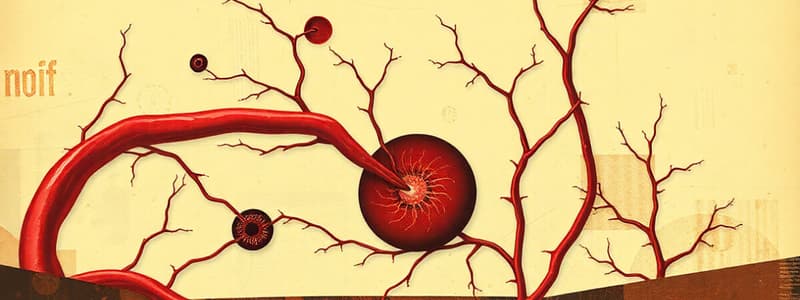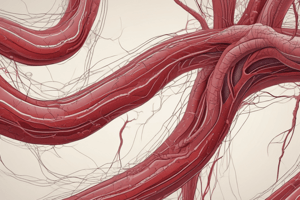Podcast
Questions and Answers
What is Hematology?
What is Hematology?
The study/science of blood.
Which of the following is NOT a type of blood vessel?
Which of the following is NOT a type of blood vessel?
- Arteries
- Lungs (correct)
- Veins
- Capillaries
Match the suffixes with their meanings:
Match the suffixes with their meanings:
-algia = pain along a nerve -cide = the killer of -emia = blood -itis = inflammation
Capillaries are the largest type of blood vessel.
Capillaries are the largest type of blood vessel.
Red blood cells are also known as ______.
Red blood cells are also known as ______.
What is the liquid portion of unclotted blood called?
What is the liquid portion of unclotted blood called?
The main function of red blood cells is to transport ______.
The main function of red blood cells is to transport ______.
What is a critical step in blood collection?
What is a critical step in blood collection?
What should a phlebotomist maintain?
What should a phlebotomist maintain?
Platelets are also known as leukocytes.
Platelets are also known as leukocytes.
Flashcards are hidden until you start studying
Study Notes
Introduction to Hematology
- Hematology derives from Greek, combining "haima" (blood) and "logos" (study).
- Blood is a red liquid circulating through the heart, veins, arteries, and capillaries.
Types of Blood Vessels
-
Arteries:
- Distributing blood vessels exiting the heart with thickest walls.
- Diameter: approximately 4 mm.
-
Veins:
- Collecting blood vessels returning to the heart, largest vessels with an irregular lumen.
- Diameter: approximately 5 mm.
-
Capillaries:
- Smallest blood vessels facilitating exchange between arterial and venous systems.
- Diameter: approximately 8 micrometers (um).
Functions of Blood
- Respiratory: Transports oxygen and carbon dioxide.
- Nutritional: Provides nutrients to cells.
- Excretory: Eliminates waste products.
- Buffers body pH and maintains temperature.
- Carries hormones and contributes to defense mechanisms.
Blood Composition
- Liquid Portion:
- Plasma: Unclotted blood component.
- Serum: Liquid portion after clotting.
- Solid Portion:
- Red Blood Cells (RBCs): Erythrocytes; also known as erythroplastids or akaryocyte (nucleus-free cells).
- White Blood Cells (WBCs): Leukocytes; categorized as granular (Basophils, Eosinophils, Neutrophils) and agranular (Lymphocytes, Monocytes).
- Platelets: Thrombocytes involved in clotting.
- Gaseous Portion: Includes oxygen and carbon dioxide.
Blood Collection
-
Patient Identification:
- Confirm patient’s full name, age, gender, and birthdate; should be done by the patient.
- Critical step; mislabeling is a significant error.
-
Phlebotomist Hygiene:
- Essential for maintaining health and hygiene: clean clothes, hair, and short fingernails.
- Adhere to standard precautions, especially with gloves and handwashing.
Characteristics of Blood
- Fluid state (in vivo).
- Slightly alkaline pH.
- Average specific gravity: 1.055.
Studying That Suits You
Use AI to generate personalized quizzes and flashcards to suit your learning preferences.



